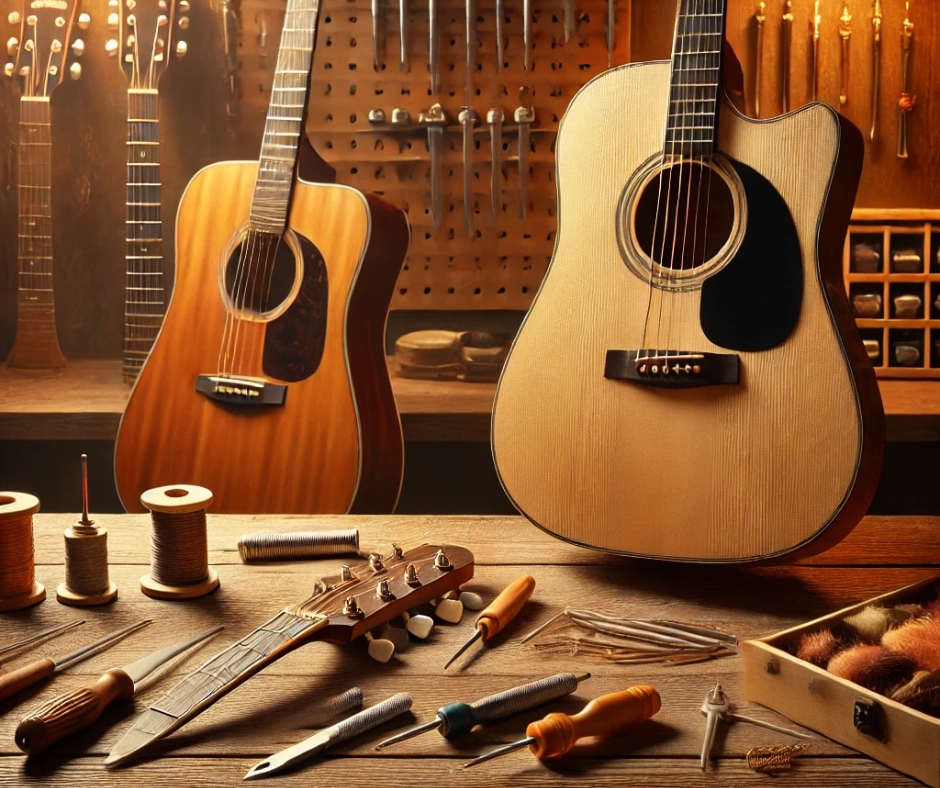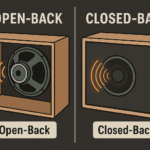A proper guitar setup is key to achieving smooth playability and maintaining great tone. Whether you’re a beginner or an experienced player, knowing how to adjust your guitar’s action, intonation, and neck relief can drastically improve your playing experience. In this guide, we’ll break down each of these essential components and provide practical tips for fine-tuning your guitar.
What Is a Guitar Setup?
A guitar setup involves tweaking different parts of your instrument to ensure it’s comfortable to play and sounds its best. Over time, changes in humidity, string tension, and wear and tear can throw your guitar out of alignment. A proper setup can:
• Improve note clarity
• Prevent fret buzz
• Enhance overall comfort and playability
Step 1: Adjusting Guitar Action
What Is Action?
Action refers to the distance between the strings and the fretboard. Too high, and the guitar will be hard to play; too low, and you’ll get fret buzz.
How to Check Your Guitar’s Action
1. Measure Action: Use a ruler or string action gauge to measure the distance between the bottom of the string and the top of the 12th fret.
• Recommended Heights:
• Electric guitars: 1.5mm to 2mm
• Acoustic guitars: 2mm to 3mm
• Bass guitars: 2.5mm to 3.5mm
2. Test Each String: Play each string to ensure there’s no fret buzz.
How to Adjust Action
• For Acoustic Guitars: Adjust the action by sanding down or replacing the bridge saddle.
• For Electric Guitars: Use the bridge height adjustment screws (often located on individual saddles) to raise or lower the strings.
• Tip: Lower the action incrementally, testing frequently to avoid introducing fret buzz.
Step 2: Adjusting Guitar Intonation
What Is Intonation?
Intonation ensures that your guitar plays in tune across the entire fretboard. Poor intonation causes notes to sound sharp or flat, especially when fretting higher up the neck.
How to Check Intonation
1. Tune the Open Strings: Use a chromatic tuner to ensure all strings are properly tuned.
2. Check the 12th Fret Harmonic: Play the harmonic at the 12th fret and compare it to the fretted note at the 12th fret using the tuner.
• If the fretted note is sharp, the string length is too short.
• If the fretted note is flat, the string length is too long.
How to Adjust Intonation
• Electric Guitars: Use a screwdriver to move the bridge saddles forward or backward.
• Acoustic Guitars: Intonation adjustments are more limited and often involve tweaking the bridge saddle position or filing it down slightly.
Tip: Intonation adjustments can be tricky. If you’re struggling to get it right, consider taking your guitar to a professional.
Step 3: Adjusting Neck Relief
What Is Neck Relief?
Neck relief refers to the slight curvature of the guitar neck that helps accommodate string vibration. Too much relief can make your action feel high, while too little relief can lead to fret buzz.
How to Check Neck Relief
1. Capo at the 1st Fret: Place a capo on the 1st fret.
2. Press the 17th Fret: Hold down the low E string at the 17th fret.
3. Measure Relief: Look at the gap between the bottom of the string and the 7th or 8th fret.
• Ideal neck relief is about 0.25mm to 0.5mm.
How to Adjust Neck Relief
• Locate the Truss Rod: The truss rod is usually accessible near the headstock or inside the body near the sound hole.
• Adjust in Small Increments:
• Turn the truss rod clockwise to reduce relief (tighten).
• Turn it counterclockwise to increase relief (loosen).
Tip: Adjust in 1/8th turns, and allow time for the neck to settle before rechecking the relief.
Additional Setup Tips
• Check Nut Height: The nut affects string height at the lower frets. Improper nut height can cause tuning instability and poor intonation.
• Use Fresh Strings: Worn-out strings can affect tone, intonation, and playability.
• Tune Regularly: Frequent tuning ensures consistent results while making adjustments.
When to See a Professional
If you’re uncomfortable making adjustments or notice persistent issues, it’s worth taking your guitar to a luthier or professional guitar tech. They can perform a full setup and fix any underlying issues.
Final Thoughts: Why a Proper Setup Matters
A well-set-up guitar feels better, sounds better, and allows you to play with greater ease and precision. Regular maintenance and periodic setups will keep your instrument in top shape, whether you’re practicing at home or performing on stage. Take the time to understand these adjustments, and your guitar will thank you with years of amazing tone.







